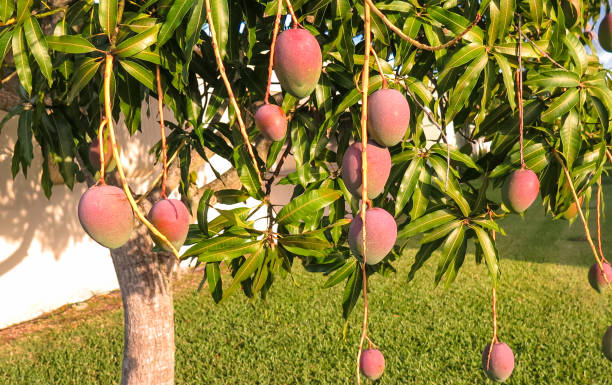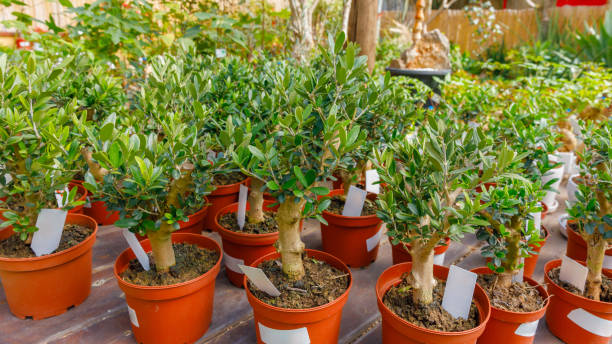10 Benefits of Vertical Gardening
Do you need more space but desire to take advantage of the advantages of gardening? Vertical gardening might be the answer you’ve been searching for!
It’s not just about making the most of space. It also provides numerous advantages.
Vertical gardening can enhance the quality of air, improve accessibility, and can even be used to help to provide the insulation you need for your property. The possibilities are endless, from adding a touch of green to your indoor area to cultivating your vegetables and herbs.
You can make a stunning and valuable vertical garden using imagination and helpful suggestions.
Continue reading to learn about the best benefits of vertical gardens, and begin transforming your garden!
When you plant your herbs and vegetables, You have greater control over the conditions of your garden and can be sure that your food products are free of harmful pesticides and chemicals. This will reduce exposure to toxic toxins and encourage healthy eating lifestyles. Vertical gardening also helps lower the chance of contracting food-borne illness because it allows you to cultivate your vegetables in a safe and secure environment, which reduces the risk of contamination. With the possibility of growing fresh, healthy food in the comfort of your own home, vertical gardening is an excellent way to increase food safety and lead to a healthier living style.
Space-Saving
Growing plants vertically can maximize your space, like balconies, patios, or smaller gardens. In addition, vertical gardens can make privacy screenings, increase the value of your garden and lower the risk of disease and pest problems by keeping plants away from the ground. Suppose you have the proper setup and care. In that case, you can cultivate an assortment of vertically grown plants, including herbs, vegetables, and even flowers, and reap an abundance of fruits and vegetables while making the most of your space.
Better Air Circulation
Planting plants vertically allows you to space them better, lowering the chance of overcrowding and increasing airflow around the plants. Air circulation is crucial to prevent fungal infections and encourage healthy growth. In addition, vertical gardens increase exposure to sunlight, which can dry out the leaves and stop water accumulation, thereby decreasing the chance of getting sick. The plants will be more likely to flourish with improved air circulation, and you will benefit from a healthier and more productive garden.
Less Soil Erosion
Vertical gardening may also help decrease soil erosion compared to conventional gardening techniques. If you plant plants vertically, you can stop soil erosion caused by strong winds or heavy rain. Vertical gardening also helps keep soil safe from the impact of foot traffic, which could cause soil erosion and lead to decay. Through supports like stakes, trellises, or hanging baskets, the soil will be less inclined to be disturbed, allowing it to remain in place and conserve its nutrients by reducing erosion of soil and ensuring healthy soil, and avoiding soil runoff that can cause water pollution.
Less Bending and Kneeling
If you plant your plants vertically, you will not have to be responsible for constantly bending and kneeling, which can be painful or painful for certain people. Vertical gardening also makes it easier to reach your plants as they are higher and more accessible, thus reducing the requirement for stretching or working. This makes gardening a more enjoyable and attainable exercise for a more significant number of people and encourages more healthy and active lifestyles.
Aesthetic Appeal
Vertical gardens can be an exciting and appealing aspect to your décor as well as the possibility to make living walls or screens that are both functional as well as visually attractive. You can make a fantastic display that brings color and a sense of texture to your home using vibrant plants, flowers, and other plant species. Vertical gardens can also help to create a sense of security regardless of whether you’re using them to block out an unattractive view or start a comfortable place to relax. With the right mix of structures and plants, vertical gardens can be an attractive and appealing design element to any space.
Improved Accessibility
Vertical gardening can provide better accessibility for those with restricted space or mobility issues. Growing a broad range of plants in the smallest space makes it perfect for balconies, small patios, or even indoor areas. Vertical gardening is also developed using accessibility as a primary consideration, which allows those who require mobility aids like wheelchairs or walkers to reach their garden effortlessly. By elevating the plants vertically, you can reduce the need to bend or reach out, resulting in an easier and more enjoyable gardening experience for all.
Noise Reduction
Plants are renowned for their capacity to suck up sound, which helps reduce the noise pollution surrounding them. If you plant plants vertically, you can create an organic sound barrier that suffocates the sound and creates a more peaceful and peaceful space. This mainly benefits people living in noisy cities or areas near traffic-spurred roads. Vertical gardening is also a great way to lower noise levels in the home and is a beautiful option for home offices or other places where noise is an issue.
Increased Yield
By using vertical space, you can plant more excellent plants over a lesser area, increasing the yield on each sq ft. In addition, vertical gardening may improve sunlight exposure and circulation of air, which can lead to healthier growth and more significant results. Using stakes, trellises, or other structures for support and tools, you can instruct plants to develop in specific patterns, like pruning or espalier methods, and increase the yield potential.
Reduced Water Usage
When you plant plants vertically, you can develop an efficient system for watering since the water can be directed directly toward the roots of the plants instead of being scattered all over the garden. In addition, vertical gardening permits better drainage and aeration, which will help avoid excessive watering and swollen soil. Through drip irrigation systems as well as other effective methods of watering as well, you can reduce water consumption and lower the cost of water. Vertical gardening can be a fantastic method of conserving water while enjoying an abundant and productive garden.
Best Indoor Plants of 2023 (Easy, Low-Maintenance Plants)
Are you looking for the perfect indoor plant that is easy to maintain and won’t consume all day? You’ve come to the right place! We’ve created an inventory of the 11 most beautiful indoor plants in 2023 that require minimal maintenance and are confident they will flourish in every setting. There’s something to suit everything from air-purifying plants to those which add color. Explore the pleasures and advantages of bringing nature indoors using these gorgeous and easy-to-care-for plants.
How to Plant, Grow, and Care for Calathea Plant Indoors
If you’re a fan of plants seeking a fresh plant to add to your indoor garden, then the Calathea Plant is an ideal option! The plant is known for its gorgeous foliage and ability to purify the air. This tropical plant is a sought-after choice for every home. We’ll walk you through all you must be aware of when it comes to planting, growing, and caring for Calathea Plants indoors. From choosing the best pot and soil to suggestions to maintain the beauty and health of your plant, We’ve got it covered. Learn the tricks to keep your Calathea Plant thriving and add a natural look to your living space. Take advantage of the opportunity to add this stunning plant to your home!
Types of Pothos: 15 Varieties to Consider Growing Today
Are you a fan of plants and want to add more plants to your collection? Consider Pothos! Pothos plant! It is easy to care for and has gorgeous foliage. This exotic plant can be an excellent option for indoor gardens. Did you know there are over 15 kinds of Pothos to pick from? This article will look at the different varieties of Pothos plants and give guidelines for caring for each. From the traditional Golden Pothos to the unique Jade Pothos, a variety suits any taste and style. Learn about the appeal and versatility of the Pothos plant, and take your indoor gardening to the top of the line!
How to Grow & Care for Monstera adansonii | Swiss Cheese Plant
Are you looking for an impressive plant that’s simple to maintain and can provide a touch of tropical style to your home? It will help if you look no further than Monstera adansonii, the Swiss Cheese Plant. We’ll take you through all you should know about growing and maintaining this popular house plant. The list is endless, from soil care tips and watering to recommendations regarding pruning and propagation. Learn the tricks to keep your Monstera adansonii happy and healthy and take your indoor gardening to the highest level. Take advantage of your opportunity to add this beautiful plant to your garden!
How to Plant, Grow, and Care for Shampoo Ginger Lily
Have you ever thought of cultivating your shampoo ginger Lilies? However, these exotic plants bring more than a lovely accent to your yard. They also make an organic shampoo that is great for hair! This article will take you through all you need to learn about growing, planting, and maintaining shampoo, ginger, and lilies. From choosing the best soil and sun to the best practices for ensuring their health and achieving the most effective results, we’ve got it covered. Learn about the pleasure of growing these practical and versatile plants, and boost your gardening abilities to a new level.


